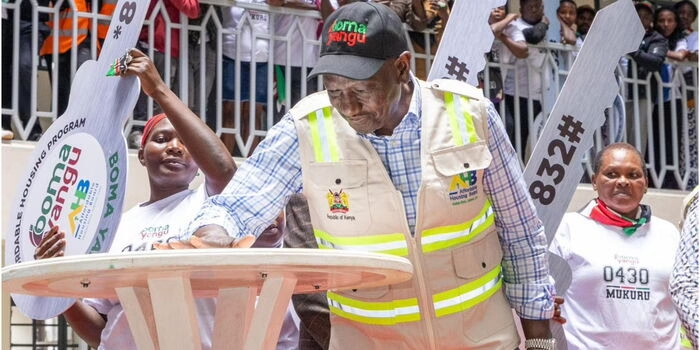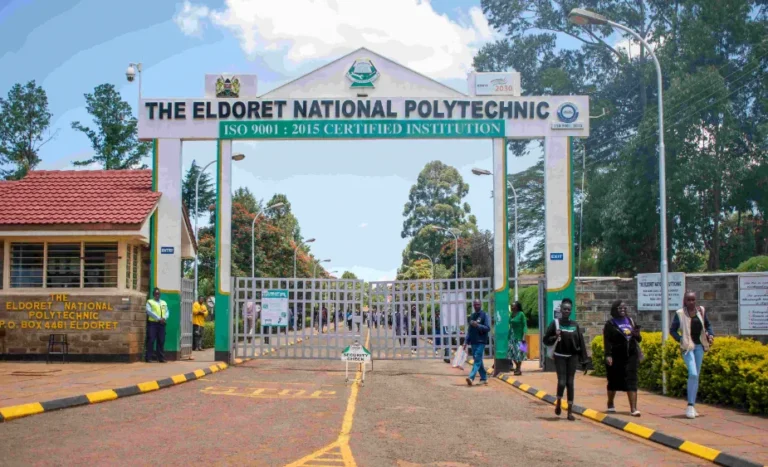
President William Ruto officially opened the inaugural 1,080 affordable housing units at Mukuru, Nairobi, marking an iconic moment for a government initiative designed to provide low-income Kenyans with dignified housing and change the face of informal settlements. The opening of the units fulfills part of the government’s initiative to deliver over 500,000 affordable housing units in the country by 2027 under the Bottom-Up Economic Transformation Agenda (BETA).
Mukuru kwa Njenga, one of the largest informal settlements in Nairobi, has faced long-standing challenges such as poor infrastructure, poor sanitation, and a lack of suitable housing, which have compounded the conditions in which residents live. The units, built in situ, now provide modern housing with the following amenities:
• 1- and 2-bedroom apartments.
• Affordable and reliable water and power supply.
• Modern sewerage systems.
• Safe and gated housing.
• Schools, health centres and markets nearby.
The State Department for Housing also stated that the units will be very affordable, with rent-to-own options with prices beginning at Ksh 2,500 per month, planned to accommodate informal sector workers and vulnerable groups.
Statistics Show High Demand and Strong Public Interest
The affordable housing assistance has generated substantial excitement and participation:
Over 50,000 interested applicants for Mukuru units,
There is a national housing deficit in Kenya estimated at more than 2 million units, growing at a rate of 20000 per year,
According to the Kenya National Bureau of Statistics (KNBS), only 17% of people living in urban areas live in formally built houses, while more than 60% of people reside in informal settlements.
This information confirms the necessity of these types of projects, and supports the national focus of the Government on changing the modern urban housing situation across the nation.
The construction of the Mukuru units created over 3,000 direct and indirect jobs, from casual labourers to skilled artisans, to youth running as contractors. The housing sector values nearly 7% of Kenya’s GDP in the ownership of The Kenya Mortgage Refinance Company (KMRC), and developing projects like Mukuru only help towards the direction of that growth.
In his speech during the handover ceremony, President Ruto said the housing agenda is important not just for housing, but also for economic empowerment. “We are building more than just houses! We are building livelihood, dignity,” he stated.
Mixed Reactions fronting the Launch
Numerous Kenyans applaud the program as a much-needed remedy for urban poverty and unsafe living conditions. The social media reaction since the launch has been overwhelmingly positive, with the hashtags #AffordableHousingKE and #MukuruHomes trending within hours of the launch on all social media platforms, particularly on Twitter and Facebook.
Beneficiaries of these homes were also complimentary of the impartial and transparent process in which homes were allocated digitally via a lottery to remove favoritism.
However, while Mukuru garnered a great deal of enthusiastic acclaim, some Kenyans expressed concerns about the mandatory Housing Levy that financed the Mukuru projects. Critics noted that the levy levies yet another imposition for the already hard-pressed citizens, given the current high cost of living.
Others also questioned whether the rent-to-own model can be accessible across the income divide. In addition, ensuring transparency in the future allocation of beneficiaries into the program will be important to retain public confidence.
Following Mukuru, there are already plans to complement the program with similar plans for Kibera, Mathare, Korogocho, and Kawangware. The government has also indicated that it expects to include private partners and begin construction on over 200,000 units across the country in 2025 alone, in any form of public-private partnership with the intention of expanding the model.
These developments are all temporary measures, underpinned by land banking, urban planning policies, and interventions and incentives to developers.

